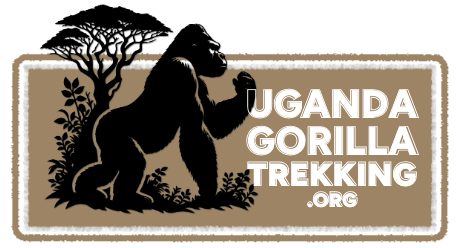Chimpanzee Trekking in Uganda – A Wild Encounter with Our Closest Cousins
When most people think of primate encounters in Uganda, mountain gorillas usually steal the spotlight. But hidden within the rustling canopy of the country’s ancient forests is another extraordinary experience—chimpanzee trekking. Unlike gorilla trekking, which is slow and grounded, chimp trekking is fast, thrilling, and wildly unpredictable. It’s a dance through the trees, a game of hide and seek with some of the most intelligent, expressive, and socially complex animals on the planet. And in Uganda, you’ll find yourself immersed in the best chimpanzee tracking opportunities anywhere in East Africa.
Why Chimpanzee Trekking in Uganda Is So Special
Uganda is home to over 5,000 wild chimpanzees, scattered across various tropical forests and savannah reserves. What makes this country truly exceptional is not just the numbers, but the accessibility. From the famous Kibale Forest to the hidden gems of Kyambura Gorge and Budongo Forest, Uganda offers multiple chimp trekking destinations, each with its own rhythm, scenery, and personality.
Trekking chimpanzees is not about observing from a distance. It’s about being part of a forest that vibrates with life—following the echo of hoots, the rustle of leaves, and the occasional crashing of branches as these agile creatures move through the canopy. Unlike gorillas who spend much of their time grounded, chimpanzees are often up in the trees. Their movements are quick, their calls loud, and their presence electric. You don’t just see chimpanzees—you feel them.
Top Places to Go Chimpanzee Trekking in Uganda
The most renowned place for chimpanzee trekking is Kibale National Park, often dubbed the “primate capital of the world.” With over 1,500 chimpanzees and 13 other primate species, Kibale offers the highest success rate for sightings—sometimes as high as 95%. The park’s dense, verdant rainforest makes for an unforgettable backdrop to your trek, with rich birdlife and unique flora at every turn.
Another compelling destination is Kyambura Gorge, located on the eastern edge of Queen Elizabeth National Park. Often called the “Valley of Apes,” this dramatic, steep-sided gorge feels like a lost world. Here, trekking becomes a descent into a world apart, where you follow a small population of chimps in an isolated, almost cinematic setting.
Then there’s Budongo Forest, part of the greater Murchison Falls Conservation Area. This semi-deciduous rainforest is one of the oldest and most ecologically important in East Africa. It’s a perfect destination for travelers who want to combine chimpanzee trekking with a classic savannah safari.
What to Expect on a Chimpanzee Trek
A typical chimp trek begins in the early morning, just after sunrise. After a briefing from experienced rangers or guides, you’ll head into the forest in small groups, following the telltale signs of chimpanzee movement—dung, discarded fruit, knuckle prints, and vocalizations. The trek can last from 1 to 4 hours depending on the chimpanzees’ location, as they move quickly through their home range.
When you finally catch up with them, you’re allowed to spend one hour observing. During that time, you may see them grooming, feeding, playing, mating, or even arguing—expressing a wide range of emotions in ways that can feel surprisingly human. Their interactions are raw and real, often leaving visitors with a deeper understanding of what it means to share a lineage with these remarkable beings.
Unlike gorilla trekking, which is usually more still and intimate, chimpanzee tracking is dynamic. The chimps may keep moving, leaping through branches or even running on the ground. You’ll need to be ready to follow—and be rewarded with spontaneous, unscripted moments that no zoo or documentary could ever replicate.
Best Time for Chimpanzee Trekking in Uganda
Chimp trekking is available year-round, but the dry seasons from December to February and June to September offer the best conditions. During these months, trails are less muddy and more accessible. However, chimps tend to roam more widely in the dry season, which may lengthen your trek. In the wet season, from March to May and October to November, chimps often stay closer to feeding zones, making them easier to locate—but expect muddy, slippery paths and rainfall.
Chimpanzee Habituation Experience (CHEX)
For travelers who want more than just an hour with the chimps, Uganda offers the Chimpanzee Habituation Experience, particularly in Kibale Forest. This immersive, all-day adventure lets you accompany researchers and trackers as they follow a chimpanzee group that is being habituated to human presence. You’ll witness raw, unscripted behavior from dawn to dusk—feeding, nesting, communicating, and everything in between.
This is not for the faint of heart. It requires stamina, patience, and a genuine curiosity about primate behavior. But for those who dare, it offers an unparalleled look into chimpanzee society and forest ecology.
Permits and Practical Info
Chimpanzee trekking permits are required and vary by location:
Kibale Forest: Approx. $200 per person (for 1-hour trek)
Kyambura Gorge: Approx. $50 per person
Budongo Forest: Approx. $130 per person
Habituation Experience (Kibale): Approx. $250 per person
Permits are best booked in advance, especially in high season. Always trek with a professional guide or ranger, and wear long sleeves, hiking boots, and neutral colors. Bring insect repellent, plenty of water, and be prepared for uneven, forested terrain.
Conservation Impact: Why Your Trek Matters
Every permit sold helps fund chimpanzee conservation, anti-poaching efforts, and local community development. Many chimpanzee habitats in Uganda are located near or within communities, which means your visit supports both wildlife preservation and sustainable tourism models that give locals a reason to protect rather than exploit forest resources.
By choosing responsible operators and following ethical trekking guidelines, you become more than just a visitor. You become part of a much larger movement to preserve one of the planet’s most endangered and intelligent species.
